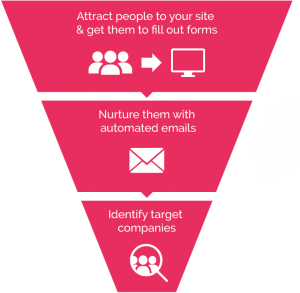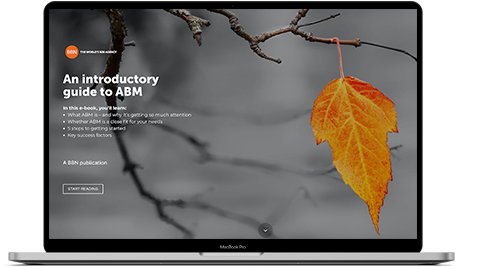With a six times higher conversion rate than other methods, it’s no wonder that more and more companies are integrating content marketing into their marketing strategy.
Whether it’s a company targeting cement plant owners in the Middle East or another launching a new seed brand in Eastern Europe, many B2B companies use content to engage their audiences.
So, we know that content marketing works, but how do you decide what content works best – and when?
To get a general idea, a simple Google search can lead you to a multitude of articles listing statistics about what works best on what platform, what times of day experience the most traffic and even what days different types of companies get the best results. However, in today’s crowded physical and digital spaces, a generic strategy will not get you noticed.
How do you stand out, then?
As you can probably imagine, every company uses slightly different strategies at different times and in different ways in order to reach its specific audiences. Yet, this does not guarantee success.
One company might nail its initial strategy, thereby generating many leads, but perhaps unsuccessfully converting them down the line. Another might end up in the opposite position.
In the end, it comes down to what point in the buyer journey you are targeting. This will determine which type of content and which channel you select – and this, of course, varies across industries.
The content marketing roadmap has been described countless times, so, for now, here’s one of the most on-point depictions we’ve seen, by TopDogSocialMedia.com.

Conquering your content kingdom
So, what works best in your industry? For your company? Well, in the words of Benjamin Jacquet from our Australian BBN partner McCorkell, the best way to answer that is to look at your past performance. Benjamin, a marketing automation and account-based marketing specialist, suggests asking yourself:
- What content has worked and why?
- What hasn’t worked?
- What can be measured and tested for the future?
The answers to these questions can be anecdotal or based on specific measures. However, regardless of which you choose, these questions will help you to get a better idea of what your customers want and, consequently, what your company needs.
Almost apologetically, Benjamin notes, “Ultimately, the best type of content is that which your prospect or buyer wants to read!”
“You probably already have an idea of what your customers want, whether that is through the use of audience profiles, personas, or simply knowledge from experience,” he continues.
“These existing indications are a good place to start, but, in the end, you can only know your customer preferences by trying and tracking.”
Filling the content gaps
During your regular content marketing schedule, you might begin to lose the attention of some of your customers. This is where Benjamin says you can “fill in the gaps” with activities such as blogging.
However, knowing what content to use to regain this attention is heavily dependent on analytics and your knowledge of how prospective customers engage with different campaigns and pieces of content as they move through the customer journey.
After this analysis, Benjamin suggests that you might end up with something like this:
- Unknown ➝ Known (50% conversion)
- Known ➝ Engaged (avg. 21 days later, 80% conversion)
- Engaged ➝ Hot Lead (avg. 11 days later, 60% conversion)
- Hot Lead ➝ MQL (avg. 3 days later, 90% conversion)
- MQL ➝ SQL (avg. 2 days later, 82% conversion)
- SQL ➝ and so on
This depicts a few steps of the buyer journey, followed by the average amount of time before the customer interacts with your content and conversion rate.
Now, categories and numbers may seem intimidating, but let us break it down. In Benjamin’s example, we can see that, on average, customers that we categorize as a “hot lead” will engage with content within three days and have a 90% conversion rate.
So, why should you care? You can use this data to see where in the funnel people slow down or where the conversion rates begin to drop.
“These are the ‘gaps’ in which you should invest in content!” says Benjamin.
Integrating the sales funnel
In order to better understand how and when these gaps can occur, you must be able to define and understand the sales funnel. This clear distinction between steps in the funnel is exceptionally important in today’s increasingly complex sales situations. In a marketing automation context, a standard sales funnel looks something like this.

It goes without saying that one of the traditional functions of marketing is to generate leads.
But a lead is not just a lead. One type of lead is the marketing-qualified lead (MQL). According to Justin McGill at LeadFuze, MQLs have met certain criteria for the marketing department through the use of analytics and show more serious potential than a typical lead.
MQLs can be found by hand or through marketing. An MQL found by hand is a target audience or persona, whereas those found through marketing have been drawn to your page in another way, such as signing up for a newsletter.
Stay focused on the right leads
While the move from lead to MQL initially might seem like a good thing, you have to watch out for suspects. Suspects are marketing-qualified leads that appear to be interested but have only made contact with your business for a reason other than becoming a customer, like simply for a free download. These people will not continue on the customer journey and, thus, they exit the funnel.
Once we have weeded out the suspects, some prospects will have the potential to move to the next step in the funnel where they are passed onto the sales team. Here, an MQL has the chance to become a sales-qualified lead, or SQL, once it is vetted by the marketing department.
Lead scoring for quality
How does this happen? This can be done through the use of a lead scoring program, where, if a lead receives a certain score, it can be passed onto sales. However, an MQL must be deemed acceptable by both marketing and sales in order to become an SQL.
Once a lead is an SQL, it continues down the sales funnel until the prospect either becomes a paying customer or exits the funnel. On another note, this is not the only appropriate place to implement a lead scoring program.
Use of a scoring program earlier in the funnel will allow you to monitor engagement. By doing this, you can gather a much more holistic view of a potential customer’s engagement, thereby creating a powerful targeting tool for your business.
Moving forward with a content strategy
As you can see, every step of the customer journey/sales funnel has its own qualities and, consequently, must be treated differently. So, a good place to start is with a content strategy. This would include topics such as, content types, content channels, and clear objectives.
Need some inspiration for strategy and evaluation? Here is a sample of what it could look like:
- Develop assumptions based on existing knowledge
- Set clear objectives with measurement criteria (aka the small content strategy)
- Prepare a small campaign
- Implement, measure, analyze
- Adjust and try again
- Re-evaluate assumptions and objectives → give it another go!
The last step is extra important. You must understand that you won’t get it all right at the beginning. You might have to fail to learn, and that is okay! Putting your strategy out there and seeing the results, rather than obsessing over doing it perfectly the first time, will save you a lot of time and money.
Now, let’s get back to the initial question: what content should I use and when should I use it? As you can see, there is no magic answer other than the fact that content produces results!
And, adding the principles of account-based marketing into the equation certainly doesn’t make it easier – but we’ll leave that for another time!
The point is that you need to determine what type of content works at what point in the customer journey so that you can learn and develop with minimum investment.
So, remember, content is king, but the king can be dethroned if he doesn’t cater to his subjects.
Thanks for the photo Michał Parzuchowski on Unsplash







